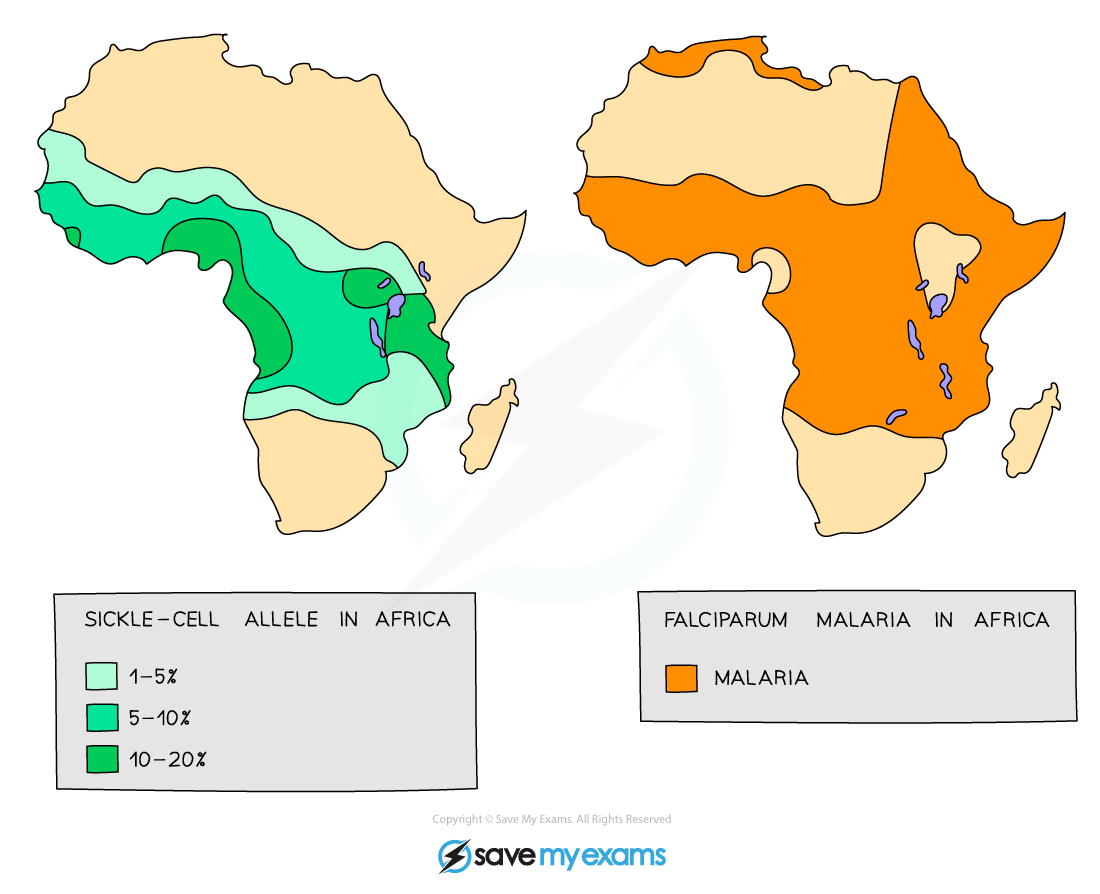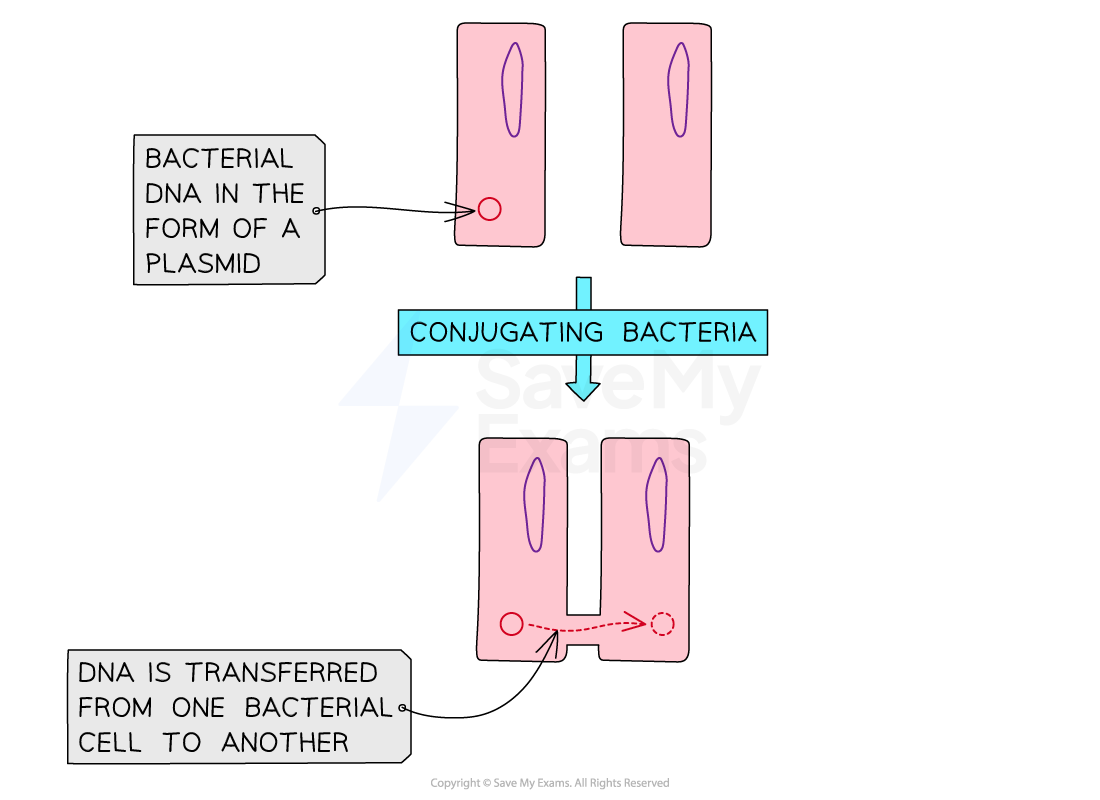Mutations & Natural Selection (College Board AP® Biology): Study Guide
Mutations & natural selection
Mutations may create new alleles and affect the phenotype of an individual; these changes are then subject to natural selection
Advantageous alleles allow individuals to outcompete others in the population, meaning that the affected individual is more likely to pass on the beneficial allele(s) to future offspring
Example: sickle cell anemia
Sickle cell anemia is caused by a mutation in the hemoglobin gene which leads to the production of abnormal hemoglobin
Individuals who are homozygous for the sickle cell allele (Hbs) will show symptoms of the disorder
There is a heterozygous advantageous to individuals who inherit one normal allele and one sickle cell allele
These individuals 'carry' the sickle cell trait but do not show symptoms, however they have been shown to be resistant to malaria, offering a survival advantage in areas with high malaria prevalence
The advantage gained by being heterozygous for the sickle cell trait means that the sickle cell allele is selected for in regions of the world where malaria is prevalent

Generating genetic variation
Genetic variation is an essential driver of natural selection
Reproductive processes that increase genetic variation—such as sexual reproduction and genetic recombination—are found across a wide range of organisms
This means that these mechanisms have been evolutionarily conserved over millions of years because they provide significant benefits for populations
In addition to generating new alleles by mutation, organisms can also generate new genetic variants by recombining alleles in new ways, e.g. during:
horizontal acquisition of genetic material in prokaryotes
recombination of genetic information from viruses
Horizontal gene transfer in prokaryotes
Horizontal acquisition of genetic material in prokaryotes is the transfer of DNA, often in the form of plasmids, between prokaryotes of the same generation (i.e. not from parent cell to daughter cell); this can be achieved by:
transformation - DNA in the environment is taken up by a cell and incorporated into its DNA
transduction - DNA is transferred from one bacterial cell to another via viral particles (bacteriophages)
conjugation - a thin tube, or pillus, forms between two bacteria to allow the exchange of DNA
transposition - the movement of a segment of DNA or genes between and within the same chromosome, or between different DNA molecules (e.g. plasmids and chromosomal DNA)

Recombination of viral genes
Sometimes two viruses infect the same host cell at the same time
The genetic material from the two strains interacts during viral replication, using the host cell's replication processes; this is called viral recombination
Virus progeny acquire genes from both strains, increasing genetic variation

Unlock more, it's free!
Did this page help you?